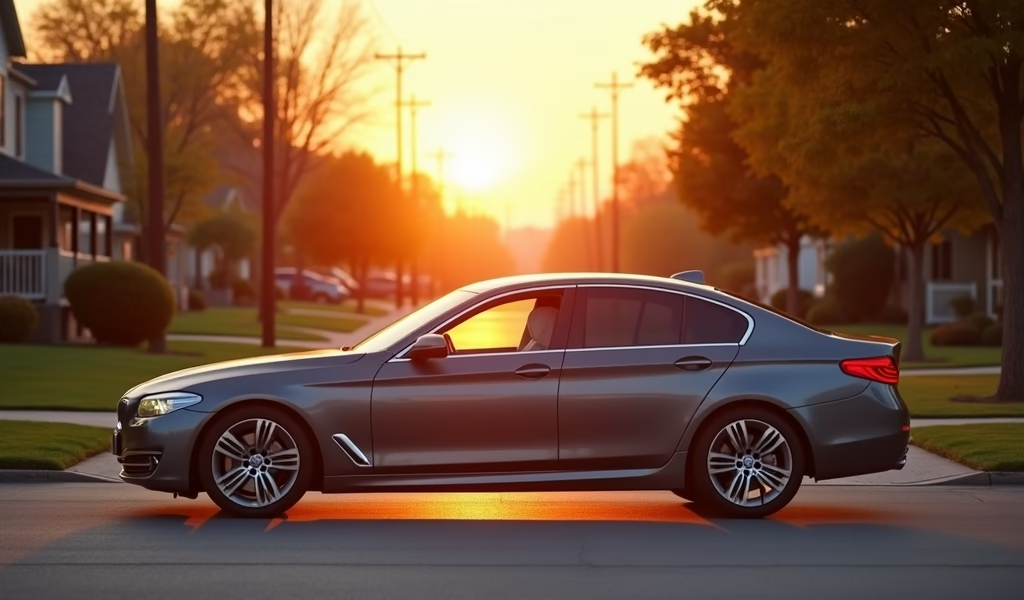Overview
The article provides five essential strategies for new drivers to reduce high insurance costs: comparing quotes, using telematics policies, choosing insurance-friendly vehicles, taking advanced driving courses, and adding experienced drivers to policies. Insurance rates typically start high for rookies due to statistical risk factors but decrease over time with safe driving habits and strategic policy choices.
Table of Contents
- Understanding New Driver Insurance
- Why Insurance Costs More for Rookies
- Tip 1: Compare Insurance Quotes
- Tip 2: Consider Telematics Policies
- Tip 3: Choose the Right Car
- Tip 4: Take Advanced Driving Courses
- Tip 5: Add an Experienced Driver
- Conclusion
- Frequently Asked Questions
Understanding New Driver Insurance
Navigating the world of auto insurance as a new driver can feel like trying to change your timing belt with a butter knife – confusing, intimidating, and potentially expensive if you make the wrong move. Finding the best insurance for new drivers isn’t just about saving a few bucks; it’s about securing proper protection while you gain experience behind the wheel.
Let’s face it – insurance companies look at fresh drivers the way mechanics eye a rusty bolt: with caution and concern about what might go wrong. Without a driving history to prove your reliability, insurers hedge their bets by charging higher premiums. But don’t worry – just like a well-maintained engine eventually runs smoothly, your insurance situation will improve with time.
New drivers, whether teenagers just getting their license or adults who’ve delayed driving, all face the same uphill battle. Insurance companies see you as an unknown quantity, and in their world, unknowns equal risk. According to the Insurance Institute for Highway Safety, drivers aged 16-19 are three times more likely to be in a fatal crash than drivers over 20. Those aren’t just statistics – they’re the reason your premium looks more like a car payment.
Why Insurance Costs More for Rookies
If you’re wondering why your insurance quote made your eyes water, it’s not just because insurers have it out for newcomers. The cold, hard truth is that car insurance for new drivers costs more because statistics show you’re more likely to need it. It’s like how we mechanics charge more to fix exotic cars – not because we’re greedy, but because the risk and potential costs are higher.
Inexperience behind the wheel translates to higher accident rates. When you haven’t developed those split-second reaction times or the instinct to spot potential hazards, you’re more vulnerable on the road. It’s similar to how a rookie mechanic might miss warning signs that an experienced pro would catch immediately.
The insurance companies have crunched the numbers, and they know that new drivers file more claims. Young drivers especially are more likely to engage in risky behaviors like texting while driving, speeding, or driving with similarly inexperienced friends. According to the Centers for Disease Control and Prevention, teens are more likely than older drivers to make critical decision errors that lead to serious crashes.

Tip 1: Compare Insurance Quotes
Shopping for insurance without comparing quotes is like buying a car without checking under the hood – you might end up with a lemon. Take the time to get quotes from at least three different companies, as prices can vary dramatically for the exact same coverage.
Don’t just settle for the big-name providers everyone knows. Sometimes smaller, regional insurers offer better rates for new drivers because they’re hungrier for business. Think of them as the independent shops that might give you more personalized service than the big dealerships.
When you’re comparing quotes, make sure you’re looking at apples-to-apples coverage. Some companies might offer a temptingly low rate, but when you read the fine print, you’ll find they’ve slashed your coverage to the bare minimum. That’s about as useful as a spare tire with no air – it looks like it’s there to help, but it won’t do much good when you really need it.
Online comparison tools can save you hours of phone calls and paperwork. They’re like having a multi-tool in your pocket – efficient and convenient. But remember, these tools sometimes don’t show every available discount, so it’s worth following up directly with the companies that offer the most promising quotes.
Tip 2: Consider Telematics Policies
If you’re confident in your driving abilities despite your rookie status, telematics or “black box” insurance could be your ticket to lower premiums. These policies use technology to monitor your actual driving behavior rather than lumping you in with every other new driver. It’s like having a driving coach in your car, observing and rewarding your good habits.
Telematics devices track factors like acceleration, braking, cornering, speed, and what times of day you drive. Drive like you’ve got an egg under your gas pedal and a cup of hot coffee on your dashboard, and you could see your premiums drop significantly at renewal time.
Many young drivers save 20-30% with these programs, according to recent industry data. For someone facing a $3,000 annual premium, that’s like getting a $600-900 discount just for proving you’re not the risk the statistics suggest.
The beauty of telematics is that it puts you in control. Rather than being judged by your age or lack of experience, you’re evaluated on how you actually drive. It’s the insurance equivalent of showing your work in a math problem – you get credit for doing things the right way.
Some insurers even offer smartphone apps instead of physical devices, making it even easier to participate. Many provide feedback on your driving, helping you improve your skills while simultaneously lowering your costs – a win-win scenario that’s rare in the insurance world.
Tip 3: Choose the Right Car
Your choice of vehicle can impact your insurance rates almost as much as your driving history – or lack thereof. Selecting the right car for a new driver is like choosing the right tools for a job: get it wrong, and everything becomes more difficult and expensive.
Insurance companies categorize cars into groups based on factors like value, performance, safety features, and repair costs. As a rule of thumb, the more modest the car, the more modest your insurance premium. That flashy sports car might turn heads, but it’ll also turn your wallet inside out when the insurance bill arrives.
Look for vehicles with good safety ratings from organizations like the Insurance Institute for Highway Safety. Cars equipped with advanced safety features not only protect you better in an accident but can also qualify you for insurance discounts. It’s like investing in quality protective gear – it costs a bit upfront but saves you pain (and money) down the road.
Avoid high-performance vehicles, luxury models, and cars that are commonly stolen. From an insurer’s perspective, these are all red flags that translate to higher premiums. Instead, consider reliable sedans, small SUVs, or hatchbacks with good safety records and affordable repair costs.
Before buying any car, get insurance quotes for that specific model. What seems like a great deal at the dealership might look very different once you factor in insurance costs. I’ve seen too many young drivers forced to sell a car they love because they couldn’t afford to insure it.

Tip 4: Take Advanced Driving Courses
Advanced driving courses do more than just sharpen your skills – they can also trim your insurance premiums. Think of these courses as preventative maintenance for your driving record: an investment that pays dividends in safety and savings.
Many insurers offer discounts of 5-15% for young drivers who complete recognized defensive driving courses. These programs teach techniques that go beyond basic driver’s education, covering emergency maneuvers, hazard recognition, and proper responses to challenging road conditions.
The skills you’ll learn aren’t just theoretical – they’re practical tools that could save your life. Just as knowing how to properly maintain your vehicle prevents breakdowns, knowing advanced driving techniques prevents accidents. And fewer accidents mean lower insurance costs over time.
Look for courses specifically designed for new driver car insurance discounts. Not all programs qualify, so check with your insurance company before enrolling. The initial cost of the course is typically recouped within the first year through premium reductions.
Beyond the financial benefits, these courses build confidence and competence behind the wheel. They’re especially valuable for new drivers who might not have experienced challenging driving conditions during their standard training. Think of it as learning to handle a skid before you actually encounter black ice – knowledge that pays off when you need it most.
Tip 5: Add an Experienced Driver
Adding an experienced driver to your policy – or being added to theirs – can substantially reduce insurance costs for new drivers. This approach works like having a master mechanic co-sign your work; their experience lends credibility to your operation.
For young drivers, being added as a named driver on a parent’s policy is often the most cost-effective option. The parent remains the main policyholder and primary driver of the vehicle, while the new driver gains coverage at a fraction of what an individual policy would cost.
If you’re an adult new driver, adding a more experienced spouse or partner to your policy can yield similar benefits. Insurance companies see the presence of an experienced driver as a risk-reducing factor, even if you’ll be doing most of the driving.
Be honest about who the primary driver will be, though. “Fronting” – falsely listing an experienced driver as the main user of a vehicle primarily driven by a new driver – is insurance fraud. It’s like rolling back an odometer: it might save money initially, but the consequences when discovered are severe, potentially including denied claims and voided policies.
Some insurers offer family plans or multi-car discounts that make adding new drivers more affordable. These packages are designed to keep families insured under one policy, streamlining paperwork and reducing overall costs.
Conclusion
Finding the best insurance for new drivers doesn’t have to be a financial nightmare. By shopping around, considering telematics, choosing the right vehicle, taking advanced courses, and exploring options with experienced drivers, you can significantly reduce your premiums while maintaining solid coverage.
Remember, insurance is a marathon, not a sprint. Each year of safe driving builds your reputation with insurers, gradually unlocking lower rates. What seems expensive now will improve with time and experience – just like your driving skills.
Be patient, drive carefully, and treat your insurance like an important part of your vehicle’s safety system – because that’s exactly what it is. The best approach combines smart shopping with safe habits, creating a virtuous cycle that protects both your wallet and your well-being on the road.
With these five tips in your toolkit, you’re well-equipped to navigate the complicated world of new driver insurance. Keep your record clean, your eyes on the road, and your insurance research thorough, and you’ll be cruising toward better rates before you know it.
Frequently Asked Questions
What’s the average cost of insurance for a new driver?
New drivers typically pay $3,000-$7,000 annually, depending on age, location, and vehicle. Young drivers under 25 generally face the highest premiums.
Can I get insurance discounts as a new driver?
Yes, many insurers offer discounts for good grades, defensive driving courses, and low mileage. Bundling policies with home or renters insurance can also reduce costs.
How long am I considered a “new driver” for insurance purposes?
Most insurance companies consider you a new driver for 3-5 years after receiving your license. Your rates typically decrease gradually as you build a clean driving history.
Is minimum coverage enough for new drivers?
Minimum coverage rarely provides adequate protection, especially for inexperienced drivers with higher accident risk. Consider at least 100/300/100 liability limits plus collision and comprehensive coverage.
Will my insurance decrease after my first year of driving?
If you maintain a clean driving record, you’ll likely see modest decreases after your first year. Significant drops typically occur after 3-5 years of accident-free driving.

